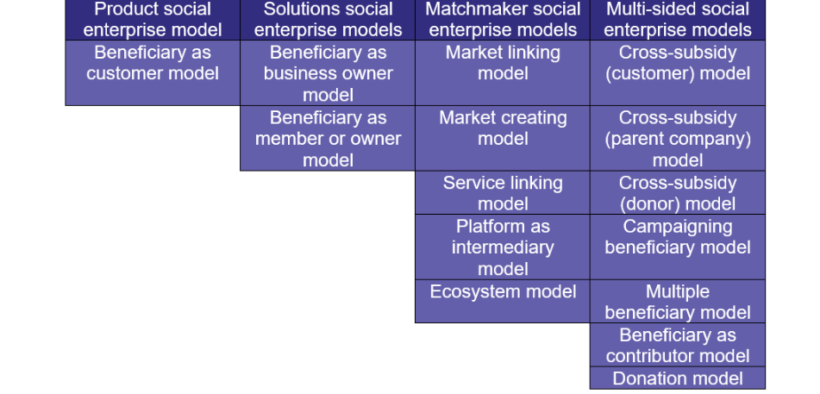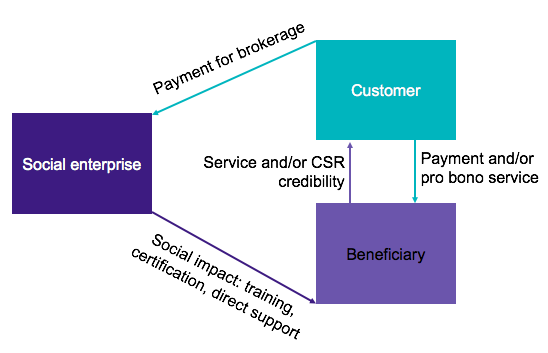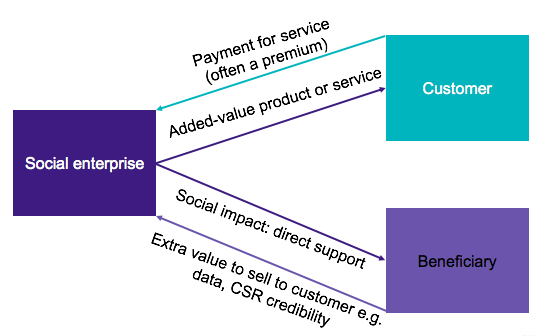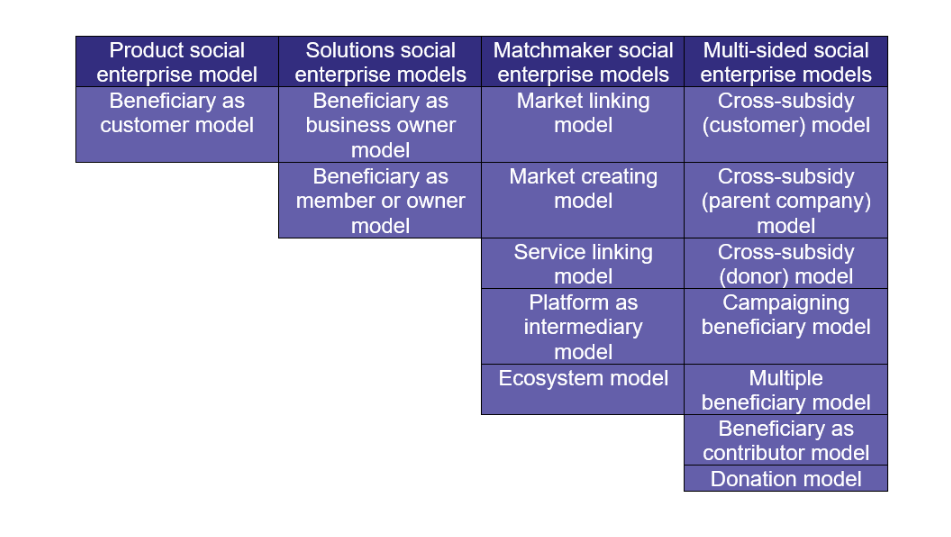Reimagining your social enterprise business model post Covid-19 (part two): the 17 social enterprise model types
Share

After the shakeup of Covid-19, many of us will be in crisis and survival mode. But now is also the time to be thinking about the future and recovery phase. There will be new market opportunities as services and products are reimagined, new needs from our communities, and a more open space for business models with purpose as we question an economic system that valued GDP above all else.
This three part blog series explores the what and how of social enterprise business models. It’s a summary of a social enterprise business model toolkit, produced by The Dragonfly Collective social enterprise consultancy. It’s based on 92 international journal articles and interviews with leaders of social enterprise peak bodies in the UK that support over ten thousand social enterprises.
Part two of the series explores the four components of a social enterprise business model and the 17 social enterprise model types. There is no magic formula (sorry!), but the types are designed to spark ideas for how your business model might shift in response to Covid-19.
The four social enterprise model categories
There are four basic business model types that explain the different ways that value is created and captured in corporate organisations. These are described in the Business Model Zoo developed by Cass Business School. In the social enterprise business model toolkit, each of these business model types has been adapted to apply to social enterprises.
Product social enterprise models
Product social enterprise models involve a standardised product sold to customers, who are also beneficiaries. In this model the value proposition for customers and beneficiaries is integrated – social impact and profit are delivered simultaneously.
Solutions social enterprise models
Solutions social enterprise models involve a customised solution developed with a customer. In this model the beneficiary is also the customer (paying a standard or reduced rate). It differs from the product model because the social enterprise engages with the customer/beneficiary about their needs and then provides an integrated solution – it tends to be service delivery. In this model the value proposition for customers and beneficiaries is integrated – social impact and profit are delivered simultaneously.
Matchmaker social enterprise models
Matchmaker social enterprise models use brokerage to connect customers and beneficiaries. Income is usually created through a fee based on ‘trades’ between the two groups. The model relies on generating trust. Value is created by reducing the search effort for customers and offering a marketplace to beneficiaries or subsidised access to support services from the brokering social enterprise. In this model the value proposition for customers and beneficiaries is parallel – social impact and profit are delivered separately through different customer/beneficiary markets.
Multisided social enterprise models
Multisided models involve brokerage between three parties. The social enterprise establishes a set of relationships between previously disconnected but complementary customers and beneficiaries. In this model the value proposition for customers and beneficiaries is parallel – social impact and profit are delivered separately through different customer/beneficiary markets.
The beneficiaries receive products or services at below cost, paid for by customers who gain from the ‘consumption’ of the beneficiary group (for example, delivery of social impact or enhanced CSR credentials). The model generally relies on ‘conscious’ customers paying a premium for services that include delivery of social impact.
The 17 social enterprise model types
Across each of these four business model types, a review of 92 international journal articles identified 17 types of social enterprise business models. These types can be adapted and combined, so are designed to spark ideas about how your business model might shift in response to Covid-19.
Summary
While there is no magic formula for social enterprise business model design, these 17 social enterprise model types offer ‘ready to wear’ models as a starting point for combining profit and social impact. Business model design in practice will always require strong contextual understanding, along with creativity and imagination.
The next question is how to develop or improve a social enterprise model. Part three in this series will cover seven steps to consider in social enterprise model design.
Tara is passionate about blending business and purpose, and is energised by working with talented people who challenge business as usual.
She has spent her career in the for-purpose sector, exploring different models for building a fairer and more equitable world. As CEO, leading the Social Traders team she’s building a thriving social enterprise sector while also supporting traditional businesses to build purpose into their operations through social procurement and ESG.
She has international experience across social enterprise, charities, social innovation and for-purpose intermediaries in the UK, Europe and Australia. Her career has spanned strategy, business development, innovation, marketing, impact and cross-sector collaboration at executive and Board level. She has led large scale collaborations, designed and implemented organisational-wide strategies for growth and diversification, and repositioned brands for increased impact.
Tara has an MBA from Bayes Business School in the UK where she specialised in social enterprise business models, a Master's in Social Innovation from Danube University in Austria where she specialised in collective impact.






























